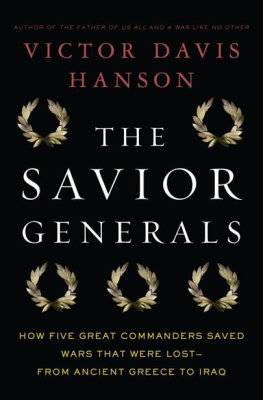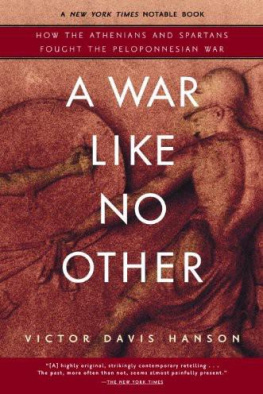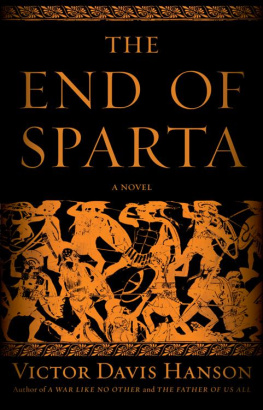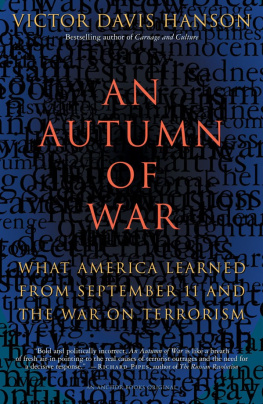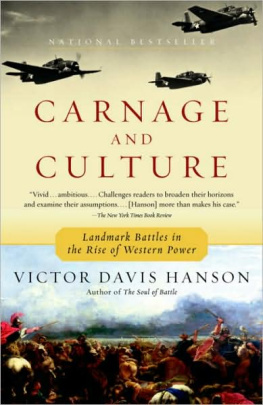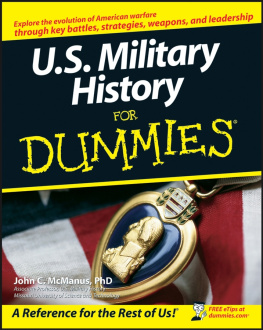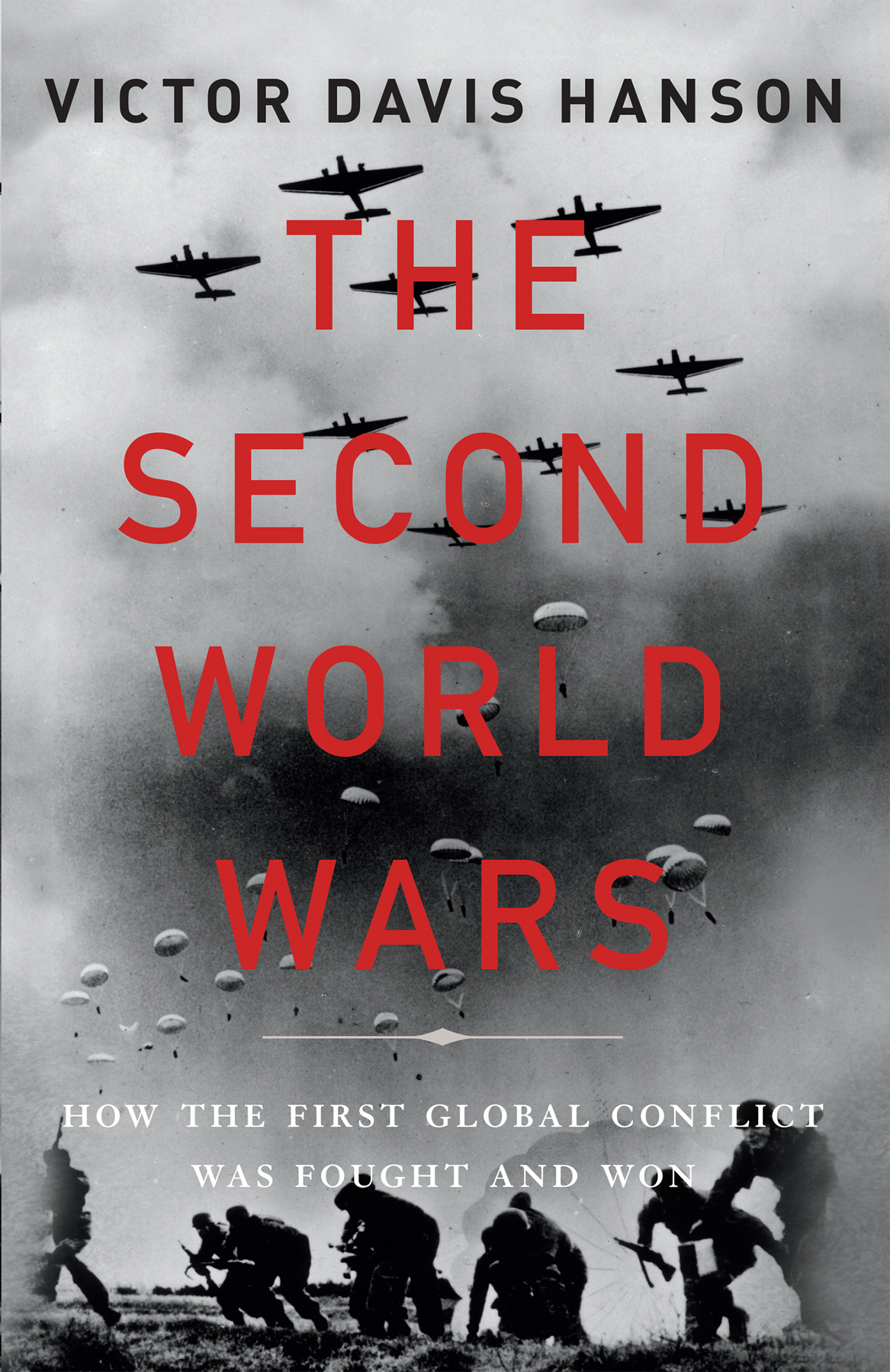Copyright 2017 by Victor Davis Hanson
Hachette Book Group supports the right to free expression and the value of copyright. The purpose of copyright is to encourage writers and artists to produce the creative works that enrich our culture.
The scanning, uploading, and distribution of this book without permission is a theft of the authors intellectual property. If you would like permission to use material from the book (other than for review purposes), please contact permissions@hbgusa.com. Thank you for your support of the authors rights.
Basic Books
Hachette Book Group
1290 Avenue of the Americas, New York, NY 10104
www.basicbooks.com
First Edition: October 2017
Published by Basic Books, an imprint of Perseus Books, LLC, a subsidiary of Hachette Book Group, Inc.
The publisher is not responsible for websites (or their content) that are not owned by the publisher.
Library of Congress Cataloging-in-Publication Data
Names: Hanson, Victor Davis, author.
Title: The second world wars : how the first global conflict was fought and won / Victor Davis Hanson.
Description: New York, NY : Basic Books, an imprint of Perseus Books, LLC., a subsidiary of Hachette Book Group, Inc., 2017. | Includes bibliographical references and index.
Identifiers: LCCN 2017024227| ISBN 9780465066988 (hardcover) | ISBN 9780465093199 (ebook)
Subjects: LCSH: World War, 19391945. | World War, 19391945Campaigns.
Classification: LCC D743 .H329 2017 | DDC 940.54dc23
\LC record available at https://lccn.loc.gov/2017024227
E3-20170923-JV-PC
I couldnt put it down. It is rare to encounter a view of the war from the multiple perspectives of the six powers, three on each side, who were the prime combatants, in the elemental theaters of sea and air and land. The analysis is excellent. The Second World Wars is a major work of historical narrative and deserves to meet readers receptive to its riches.
David Lehman, author of Sinatras Century
Victor Davis Hansons comprehensive account of World War II is a wonder. Where others have supplied a narrative, he provides analysis. He explores the wars origins; the role played in its conduct by air power, sea power, infantry, tanks, artillery, industry, and generalship; and the reasons why the Allies won and the Axis lost. This is an eye-opener and a page-turner.
Paul A. Rahe, author of The Grand Strategy of Classical Sparta
Warfare and Agriculture in Classical Greece
The Western Way of War
Hoplites (editor)
The Other Greeks
Fields Without Dreams
Who Killed Homer? (with John Heath)
The Wars of the Ancient Greeks
The Soul of Battle
The Land Was Everything
Bonfire of the Humanities (with John Heath and Bruce Thornton)
An Autumn of War
Carnage and Culture
Between War and Peace
Mexifornia
Ripples of Battle
A War Like No Other
The Immigration Solution (with Heather MacDonald and Steven Malanga)
Makers of Ancient Strategy (editor)
The Father of Us All
The End of Sparta: A Novel
The Savior Generals
For Susannah Merry Hanson (19862014)
Amata nobis quantum amabitur nulla.
T HE MORE THAN three dozen missions carried out by my father, William F. Hanson, in a B-29 bomber over Japan, were a world apart from his cousins experience. Victor Hansons war ended in a fatal May 19, 1945, rendezvous with a Nambu machine gun nest on the crest of Sugar Loaf Hill with the 6th Marine Division on Okinawa. Both fought in a way foreign to their other cousin, Robert Hanson, who worked as a logistician in Iran, ferrying American military freight to the Russians.
All three Hansons experienced different wars from that of my maternal cousin Richard Davis. He rolled across France as part of Pattons Third Army. Dicks war in turn was unlike that of another maternal cousin, Beldon Cather. As a boy I remember an occasionally feverish Beldon on the farm as a lifelong semi-invalid, suffering neurological disabilities from serial bouts with dengue fever contracted while fighting in the Pacific. Beldon did not battle in the same manner or against the same enemies or in the same places as his brother Holt, killed while serving in combat with an artillery battalion of the Seventh Army in November 1944, and buried in France at the Epinal American Cemetery.
World War II sent the youth of American, British, German, Japanese, Italian, and Russian families across the globe in odd alliances against each other. They battled in the air, at sea, and on the ground for all sorts of expressed reasons, employing machines that were often new and fighting in ways still not fully understood, and against a variety of enemies. When the veterans of my family shared stories about their service at holiday gatherings in the early 1960s, we eavesdroppers listened to their descriptions of exotic locales and situations, wondering whether they had even fought in the same war.
They insisted that they were kindred soldiers in a shared struggle against a common evil with a variety of faces. How fighting different enemies, alongside disparate allies, in greatly different ways across the globe coalesced into one war is a paradoxand the subject of this book. Its aim is to explain why a single conflict encompassed global fighting in ways not true of most prior wars, fought in limited locales between predictable enemies and through familiar methods.
I TITLE THIS book The Second World Wars for two reasons. One, no supposedly single conflict was ever before fought in so many diverse landscapes on premises that often seemed unrelated. And, two, never had a war been fought in so many different waysto the extent that a rocket attack on London or jungle fighting in Burma or armor strikes in Libya seemed to belong to entirely different wars.
World War II, however, began traditionally enough in 19391940 in Europe as a series of border conflicts exclusively between European powers, including Britain. As is true of much of European history, aggressive states attacked their perceived weaker neighbors, usually through surprise and in reliance on greater preparation and armament. By the end of 1940, what had so far seemed to be familiar European infighting had achieved a Caesarian or Napoleonic scale. But by the end of 1941, something quite cataclysmic followed: all the smaller conflicts compounded unexpectedly into a total, global war, in which the Axis powers of Germany, Italy, and Japan were soon materially outmatched, strategically unprepared, and likely to lose in catastrophic fashion. Advances in Western technology and industrialization, when married with both totalitarian zealotry and fully mobilized democratic states, also ensured that the expanded war would become lethal in a way never before seen.
Three unexpected events explain why the border fights that had begun periodicallyand sometimes ended and started againbetween 1939 and 1941 were no longer seen as a series of separate wars but had coalesced and became redefined as part of what we now know as World War II in the United States, or as the Second World War in the Anglosphere. First, Germany without warning invaded its partner, the Soviet Union (June 22, 1941). Second, in addition to its long war with China, Japan took on new enemies by conducting surprise attacks on the Pacific and Asian bases of Great Britain and the United States (December 78, 1941). Third, both Germany and Italy then declared war against the Americans (December 11, 1941).


